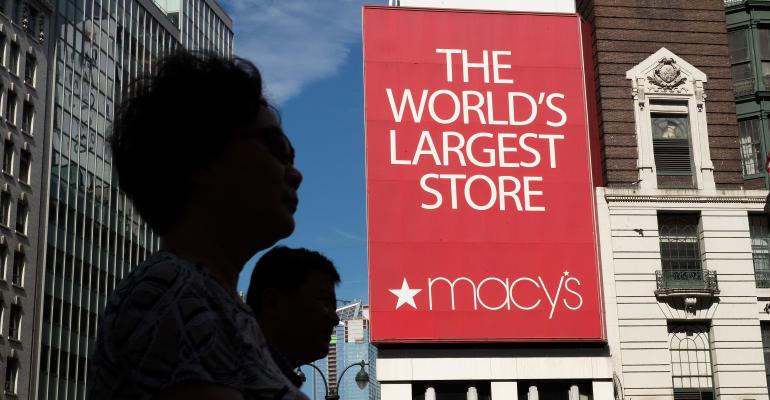It was a brutal year for the U.S. retail sector, despite a robust economy and healthy consumer spending. Massive store closures, retailers’ right-sizing, changing consumer behaviors, new delivery models and the upheaval of e-commerce competition impacted the sector.
However, there’s also opportunity. Traditional retailers are rethinking their physical location strategies and beefing up their online presence, while clicks-to-brick retailers are expanding their physical footprints.
“Retail has never been more interesting than it is right now and it’s never been harder,” says Deb Carlson, a director in the Twin Cities office of real estate services firm Cushman & Wakefield. “The roles are out the window. Everyone is sitting back and saying, ‘How do I tweak what I’m doing?’”
NREI asked retail real estate experts what might await the industry in 2020. Here are their top predictions.
1. Retail closures/bankruptcies will continue to be a burden for landlords. At least one major department store will file bankruptcy, likely J.C. Penney, according to Nick Egelanian, founder/president of SiteWorks Retail Real Estate Services.
“J.C. Penney has had the worst sales trend, and despite testing a new prototype in Dallas, I think they are just too far gone,” he notes.
Meanwhile, Macy’s could announce the closure of up to 250 underperforming stores, in Egelanian’s view, and additional bankruptcies will be concentrated among mall-dependent brands.
In addition, at least one major mall REIT bankruptcy might take place in 2020, likely CBL & Associates, Egelanian says. CBL, whose stock has been beaten down already to about $1 per share, has no real strategy for replacement of department stores and other mall staples and is heavily exposed to industry headwinds, Egelanian notes.
2. There will likely be more restaurant bankruptcies this year, says Lauren Leach, director of real estate advisory services at consulting and advisory firm Conway MacKenzie.
“This goes for both quick-serve restaurants and full-service dining,” Leach notes. “The sector is oversaturated, pressure to remodel exists, and consumers are turning towards local and healthier options. Much like retailers, many restaurants are faced with massive debt and need to raise menu prices to keep afloat.”
Furthermore, restaurant chains that haven’t kept up with recent popular delivery options have been cast aside, Leach says. There also will be a bigger push to incorporate mobile ordering, which means adjusting physical restaurant layouts to accommodate for customers picking up food, she adds.
3. Digital/physical retail will continue merging in innovative ways. The “magic retailer” is the one that can do both well, Carlson says. Retailers will no longer choose just one lane, but seek to thrive with an omni-channel model that provides a seamless shopping experience through physical stores, online sites, social media and mobile browsing.
“The maturation of e-commerce and the continued evolution of bricks-and-mortar store layouts—or store closures—leads to retailers analyzing a wealth of consumer data to better minimize any friction in the purchase lifecycle and personalize to specific consumer needs in order to trigger a purchase,” says Ricardo Rubi, retail marketing specialist/partner at New York consulting firm Simon-Kucher & Partners.
4. Mall owners will continue to focus on evolving to meet changing consumer tastes, meaning more “experiences” and mixed-use elements. Food halls, theaters, gyms, restaurants and entertainment venue will remain in demand as landlords work to find the right tenants to draw foot traffic.
“And experiential means more than just ‘give me a glass of wine with my shopping,’” Carlson notes. “It means give me a TJ Maxx, so I can dig around and find something unique. It’s any way you can engage the customer to have to show up. It’s all about getting people in, and you have to make it fun.”
Landlords will also continue adding non-retail anchors like co-working offices, hotels, apartments, medical and seniors housing to draw consumers to their properties.
5. Artificial intelligence will play a bigger role in retail. “This will definitely be at the forefront and is even here now; we’re just not aware how it’s capturing our shopping journey,” says Anjee Solanki, national director of retail services for the United States with real estate services firm Colliers International.
AI captures not only what shoppers intend to purchase, but what inspires them based on what they see through websites such as Amazon or Pinterest, Solanki notes.
“The next time you’re looking for home-decorating inspiration, see what types of ads organically pop up in your web search. Data on holiday shopping was collected as early as June from “Pinners” searching for top-trending gifts.”
6. Delivery speed will be top of mind for retailers. “Warehouse automation allows merchants to deliver efficiently and quickly, cutting out the need for human labor,” Solanki says.
At the same time, “same-day delivery,” heightened competition and costs associated with creating the best omni-channel experience will also create additional cost burdens for retailers, she adds.




